Behind the goals of nearly everyone associated with early education – teachers, administrators, and parents – lies the importance of “Maslow Before Bloom”. The interplay between Abraham Maslow’s Hierarchy of Needs and Benjamin Bloom’s Taxonomy is, after all, a cornerstone of educational psychology. I’d like to give my perspective to the significance of prioritizing Maslow’s principles before engaging with Bloom’s, particularly through the paradigm of transformational listening. I believe transformational listening can be integral in bridging Maslow’s foundational needs with Bloom’s cognitive learning objectives, creating a more holistic educational experience. The key is to enable teachers and students with a set of listening tools that demystify the notoriously ubiquitous skill of listening into a simple, practical, usable framework for listening in the classroom milieu. By doing so, both the psychological needs and learning needs are met to achieve greater outcomes.
Maslow’s Hierarchy of Needs: The Bedrock of Learner Engagement
Abraham Maslow, in his seminal 1943 paper, introduced a hierarchy that is fundamental to understanding human motivation and behavior. The hierarchy, ascending from basic physiological needs to the pursuit of self-actualization, suggests that the fulfillment of lower-level needs is a prerequisite for addressing higher-level aspirations. In educational contexts, this translates to the need for addressing students’ basic psychological and safety needs before they can effectively engage in higher cognitive processes.
Bloom’s Taxonomy: Building on Maslow’s Foundation
Enter Benjamin Bloom. His well-known taxonomy, a framework introduced in the mid-20th century, categorizes learning objectives into cognitive, affective, and psychomotor domains. The cognitive domain, especially, progresses from basic knowledge and comprehension to advanced levels of analysis, synthesis, and evaluation. Bloom’s hierarchical approach to learning objectives underscores the need for a foundational fulfillment of Maslow’s lower-level needs for effective cognitive engagement.
The Role of Transformational Listening in Education
Transformational listening is a dynamic and empathetic approach to listening that goes beyond mere auditory reception. It involves understanding, interpreting, and responding to the deeper needs and emotions conveyed by the speaker. In the context of education, transformational listening serves as a critical tool for educators to connect with their students at various levels of Maslow’s hierarchy, thus fostering an environment conducive to higher-level learning as per Bloom’s Taxonomy. I’m not so myopic to think that transformation is the secret sauce to the Maslow Before Bloom recipe, but I do think creating a a common language for listening in the classroom is a missing link that increases both psychological safety, and the understanding, which leads to both self-actualization and the ability to create the two core desired states of Maslow and Bloom, respectively.
Linking Maslow and Bloom through Transformational Listening
Transformational listening in the classroom enables educators to identify and address the various psychological and emotional needs of their students. By actively listening to understand on a deeper level and responding to these needs, teachers can create a sense of safety, belonging, and esteem among their students. This nurturing environment is essential for students to progress towards self-actualization and engage in higher-order cognitive tasks.
Practical Applications and Case Studies
For instance, a teacher who employs transformational listening can better understand the underlying reasons for a student’s lack of engagement or behavioral issues. By addressing these root causes, which often lie in unmet basic needs (as identified by Maslow), the teacher paves the way for the student to participate more fully in learning activities that require higher-order thinking skills (as outlined by Bloom). In the same manner, students who have learned the various aspects of transformational listening are better equipped to both understand their own feelings and needs and have language to express it.
Challenges and Opportunities in Implementing Transformational Listening
Implementing transformational listening in educational settings is not without challenges. While there is simplicity in the approach, it requires commitment, discipline and practice to teacher’s and the student’s part to implement this novel skill set and redefine the language of listening in the classroom. However, the potential rewards are significant, as this approach not only supports students’ emotional and psychological well-being but also enhances their cognitive development and academic success.
Conclusion
In summary, placing Maslow’s Hierarchy of Needs before Bloom’s Taxonomy and incorporating the practice of transformational listening creates a more effective and empathetic educational framework. This approach not only addresses the immediate psychological needs of learners but also sets a solid foundation for achieving higher-order cognitive objectives. By embracing transformational listening, educators can facilitate a learning environment where students are not only heard and understood but are also enabled with the tools to increase their understanding to reach their full intellectual potential.





